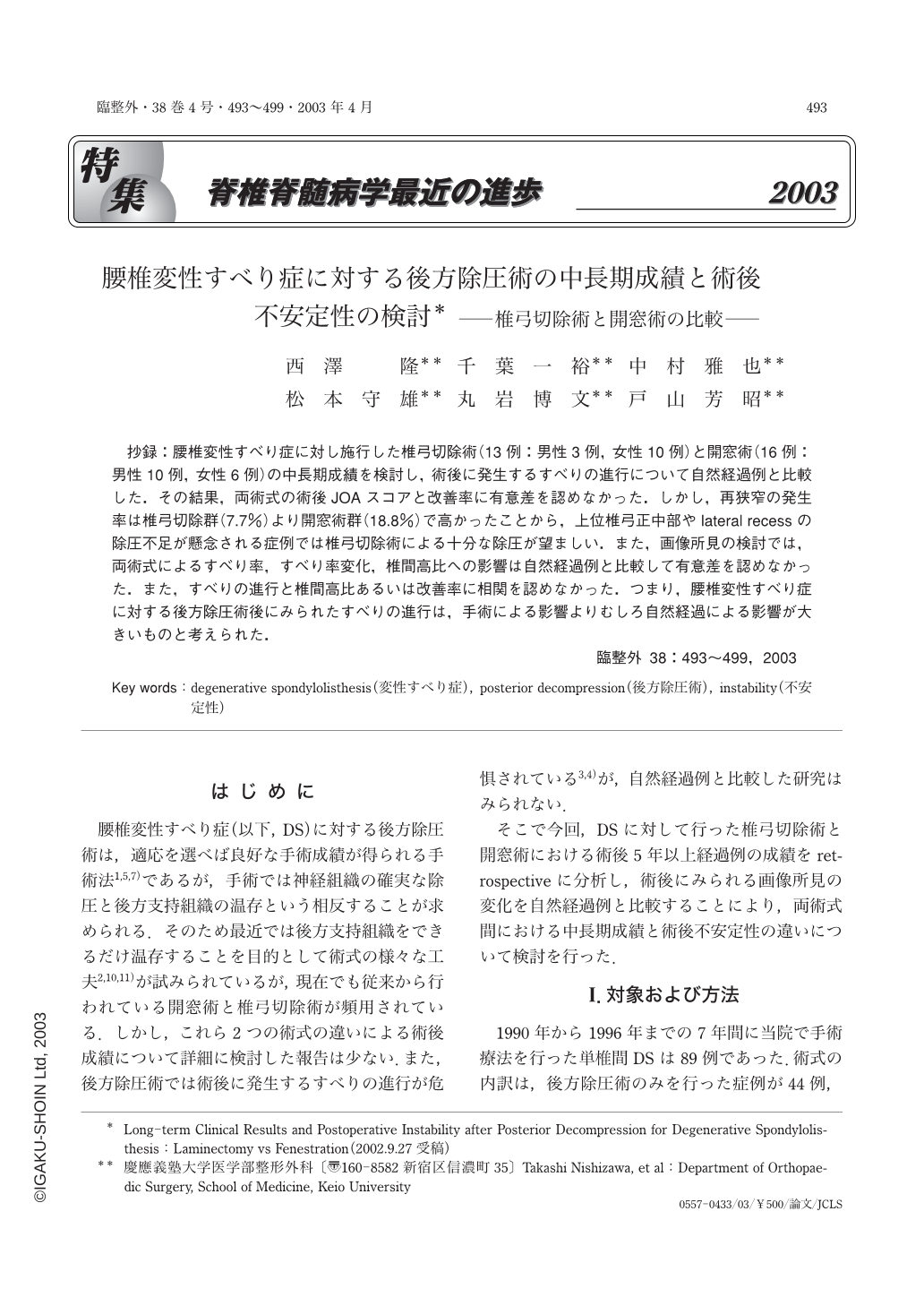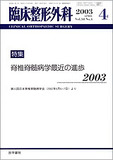Japanese
English
- 有料閲覧
- Abstract 文献概要
- 1ページ目 Look Inside
抄録:腰椎変性すべり症に対し施行した椎弓切除術(13例:男性3例,女性10例)と開窓術(16例:男性10例,女性6例)の中長期成績を検討し,術後に発生するすべりの進行について自然経過例と比較した.その結果,両術式の術後JOAスコアと改善率に有意差を認めなかった.しかし,再狭窄の発生率は椎弓切除群(7.7%)より開窓術群(18.8%)で高かったことから,上位椎弓正中部やlateral recessの除圧不足が懸念される症例では椎弓切除術による十分な除圧が望ましい.また,画像所見の検討では,両術式によるすべり率,すべり率変化,椎間高比への影響は自然経過例と比較して有意差を認めなかった.また,すべりの進行と椎間高比あるいは改善率に相関を認めなかった.つまり,腰椎変性すべり症に対する後方除圧術後にみられたすべりの進行は,手術による影響よりむしろ自然経過による影響が大きいものと考えられた.
The purpose of this study was to investigate the long-term clinical results of laminectomy and fenestration in patients with degenerative spondylolisthesis (DS) to elucidate differences between the two procedures in degree of postoperative instability and its impact on the surgical results. The subjects were 29 patients who underwent posterior decompression for single-level DS. Laminectomy was performed in 13 cases (L Group), and fenestration in 16 cases (F Group). Average age at the time of surgery and in the follow-up period did not significantly differ between the groups. Clinical results were evaluated by the Japanese Orthopaedic Association scoring system (JOA score) and recovery rate (RR). Radiographic parameters investigated were change in slippage rate and disc height on lateral neutral films before and after surgery. Radiographic parameters in both groups were compared with those of patients treated non-operatively (N Group) with an average follow-up of 91.6months. The average JOA scores in the L Group and F Group improved significantly after surgery, but the pre-and postoperative JOA scores and RRs did not differ significantly between the two groups. The JOA scores for low back pain did not worsen after surgery in either group, however, recurrent spinal stenosis was observed in 7.7% in L Group and 18.8% in the F Group. No radiographic parameters significantly differed between the two groups, and none were significantly different from those in the N Group. No correlations were found between preoperative disc height, RR, and change between of pre-and postoperative slippage rate in the L Group and F Group. The long-term clinical results in patients with DS after posterior decompression were favorable, and progression of slippage after surgery did not affect the clinical results. The results suggested that postoperative progression of slippage was mainly due to the natural aging process rather than a consequence of surgery. Since recurrent stenosis was more frequent after fenestration, laminectomy is recommended to obtain absolute decompression, if inadequate decompression is a concern.

Copyright © 2003, Igaku-Shoin Ltd. All rights reserved.


